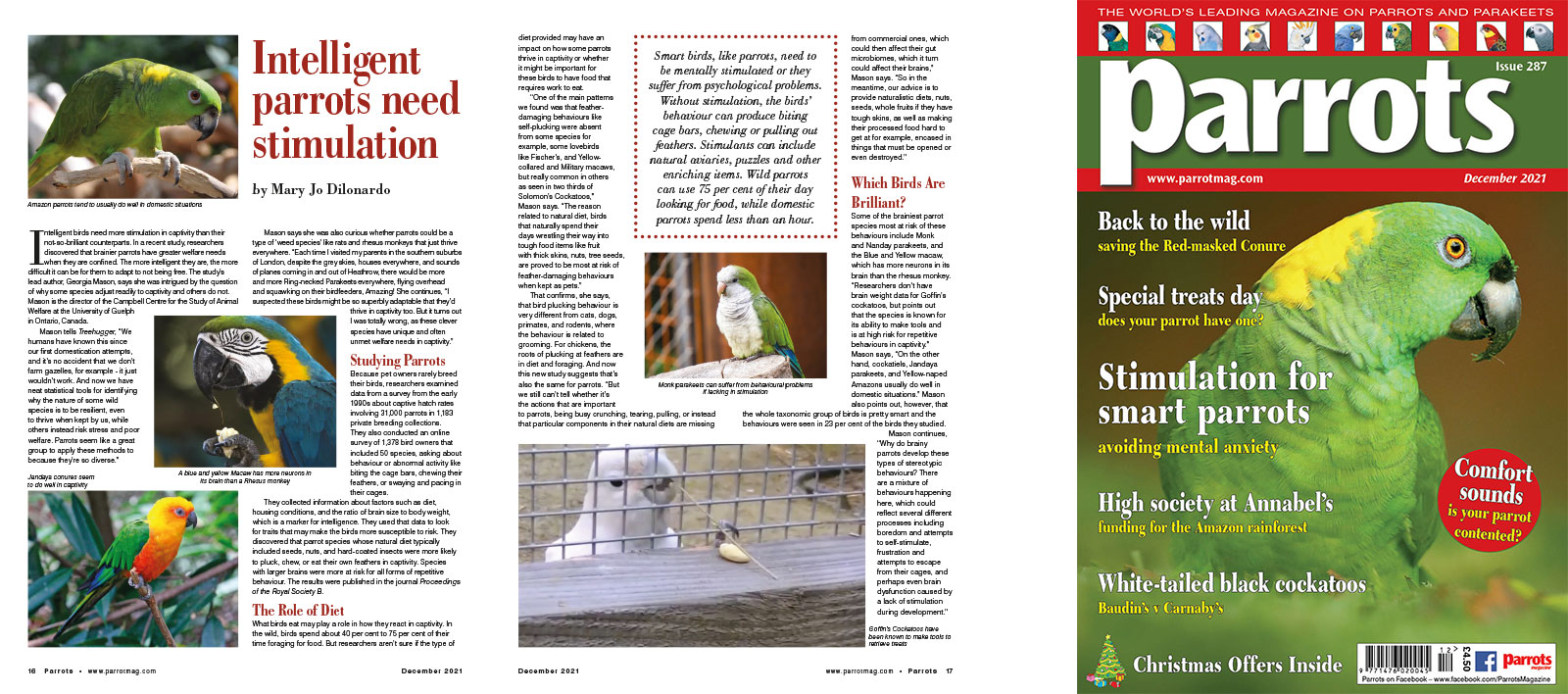
By Mary Jo Dilonardo
Intelligent birds need more stimulation in captivity than their not-so-brilliant counterparts. In a recent study, researchers discovered that brainier parrots have greater welfare needs when they are confined. The more intelligent they are, the more difficult it can be for them to adapt to not being free. The study’s lead author, Georgia Mason, says she was intrigued by the question of why some species adjust readily to captivity and others do not. Mason is the director of the Campbell Centre for the Study of Animal Welfare at the University of Guelph in Ontario, Canada.
Mason tells Treehugger, “We humans have known this since our first domestication attempts, and it’s no accident that we don’t farm gazelles, for example - it just wouldn’t work. And now we have neat statistical tools for identifying why the nature of some wild species is to be resilient, even to thrive when kept by us, while others instead risk stress and poor welfare. Parrots seem like a great group to apply these methods to because they’re so diverse.”
Mason says she was also curious whether parrots could be a type of ‘weed species’ like rats and rhesus monkeys that just thrive everywhere. “Each time I visited my parents in the southern suburbs of London, despite the grey skies, houses everywhere, and sounds of planes coming in and out of Heathrow, there would be more and more Ring-necked Parakeets everywhere, flying overhead and squawking on their birdfeeders, Amazing! She continues, “I suspected these birds might be so superbly adaptable that they’d thrive in captivity too. But it turns out I was totally wrong, as these clever species have unique and often unmet welfare needs in captivity.”








Parrot Chat
Buyers Guides
Breeding articles